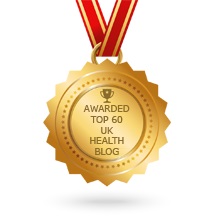By sheer chance the day I am writing this blog post is also World Asthma Day.
Provision, support and expertise for asthma in the NHS always seems far better than for other conditions, like eczema and allergies. Asthma can kill, quite quickly if not controlled and managed well, so this makes sense and coupled with allergies as well, if asthma is stable any allergic reaction will be less severe and easier to treat.
It’s woven into other conditions like hay fever, which can cause asthma and breathing problems as well as itchy eyes and nose as well as allergies which can trigger asthma reactions so it’s vitally important it’s under control. The immune system of someone with asthma is highly sensitive and can be affected by many air borne allergens and other stimuli such as stress and foods.
Are you a mouth breather?
Every time I visit my local asthma nurse I learn something new. They remind me to book a visit regularly, at least every six months and often more frequently when peak flow and asthma are worryingly not controlled.
Compare that to allergy treatment and it’s so far removed it’s not real. I have to BEG to get seen about my allergies but that’s another story. I am finally getting better treatment on that front, in another county…
Thankfully my asthma is improving at the moment, a combination of identifying one of my asthma triggers as soya milk and also managing to get fitter, not always easy when you fear an asthma attack or struggle to breathe when your heart rate is up. Spring and summer are always better for my asthma, I think the cold and damp don’t help my symptoms.
This visit was no different. Fiona, my asthma nurse, informed me that I was a ‘mouth breather’.
Which makes me think of nuisance callers and heavy breathers! Are you a mouth breather?
I’ve never heard this phrase before, but I most definitely am. This is probably a learnt habit from childhood when my sinuses were always blocked, making nose breathing almost impossible anyway. When hay fever strikes or an allergen affects your breathing, the nose often becomes blocked, but we then begin to favour mouth breathing, which is not good.
The nose is stuffed (get the pun?) with little hairs which filter out allergens and stop a lot of stuff we breath in from getting into the body, hence why it does sometimes get blocked up – it is the first line of defence against air borne allergens.
But atopic people who have hay fever, asthma and allergies have a habit of bypassing that unreliable nose and breathing through our mouths. What this means is that allergens go straight into your body and reach the blood stream much more quickly, cause asthma and generally make everything worse.
So how do we change this habit?
What is Buteyko breathing
This is what it says on the Buteyko Centre website:
“The Buteyko Method is a set of breathing exercises developed by Dr K P Buteyko to develop healthy breathing patterns, which help to maintain the correct ratio of oxygen and carbon dioxide within the bloodstream.
According to his research, some 150 diseases are linked to dysfunctional breathing: asthma, allergies and emphysema are just a few examples. More than 40 years of research have produced the Buteyko Method, which can recondition and normalise the breathing and restore the body’s most important function.
Many thousands of asthmatics and those with breathing difficulties have experienced remarkable improvement in their condition with this amazing method, which has allowed them to reduce their dependency on medication and enjoy a quality of life they previously thought impossible.
Asthma – intrinsic, extrinsic, allergic and Exercise Induced. Responds very well to the Buteyko method. Clinical trials showed that asthmatics can expect up to 96% reduction in reliever medication within three months of starting a course of intruction. “
You can watch a video explaining What is Buteyko Breathing? on YouTube here:
How to do Buteyko breathing
By a simple technique of blocking your nostrils and holding your breath, this is just one way of doing Buteyko breathing. Watch this video:
If you search YouTube there are loads of videos to watch which will give you an idea what this technique is all about.
There is a Buteyko Breathing centre which runs courses if you’re interested at http://www.buteyko.co.uk/. Also check out the Buteyko Breathing Institution.
Now I don’t know if this technique works or whether the video above is going to help anyone but the more I read about this technique the more intrigued I am.
Has anyone else tried it? Give it a go, for me it really does help me shift mucous.












I read about this technique in Dr James le Fanu’s column in the Daily Telegraph and bought the DVD and book at AllergyBestBuys.com. The breathing lessons help me to stop panicking and I thoroughly recommend it.
Thanks Harriet. I bought a book I have yet to actually read but I will. It’s on the huge pile of stuff to learn… thanks for sharing.
Buteyko works very well with asthma and allergies. I had severe asthma and allergies before I learned the Buteyko Breathing Technique while living in Europe. Within a 10 days my asthma attacks were under control and no longer needed my rescue inhaler. I have been asthma, allergy and medication free now for over 8 years.
Once I retired, I became a Buteyko Breathing Educator and now teach the Technique to others. I’ve helped many people relieve not only their asthma and allergies but many other health issues including sleep problems (insomnia, restless sleep and sleep apnea), anxiety, Raynauds Disease and others including multiple sclerosis.
The Buteyko Breathing Technique is amazing and please find a registered educator near you.
Hi Don,well that’s amazing, sounds like this technique changed your life. I will see if I can finds local course. So far London seems closest but that’s not really very close!
Hi Ruth!
There are several Buteyko practitioners in England. If you can get to London, I would recommend Patrick McKeown. He is my teacher and the one that helped me get rid of my asthma. He is by far one of the best in the world and studied directly under Dr. Buteyko. This link … http://www.buteykoclinic.com/worldwide-buteyko-clinics.html/uk … will connect you with all the practitioners in the UK.
All the best and health,
Don
Thanks Don, I will look into this. I might be able to organise around meetings in London.
The purpose of the Buteyko method is to normalize (or improve) your personal unconscious breathing pattern 24/7 so as to provide respiration in accordance with internationally accepted medical and physiological norms. (The regulation of normal breathing by the Journal of Physiology, Douglas & Haldane, 1909) Practically speaking, the method is designed to eliminate chronic alveolar hyperventilation (or too much breathing) and to restore the normal balance between carbon dioxide and oxygen in the lungs, blood and all cells.
In 1958 Buteyko was invited by Professor Meshalkin to join the Institute of Experimental Biology and Medicine at the Siberian Branch of the USSR Academy of Science Here he was given his chance to establish a functional diagnostics laboratory where he conducted clinical studies on nearly 200 people, both healthy and sick. Over the next ten years of the laboratory’s existence, Buteyko and his team were able to obtain extensive information on the basic functions of the human organism – whether healthy or diseased. The laboratory was equipped at the highest level. There was a compendium of over forty various instruments capable of simultaneously registering almost all basic functions of the human organism, and producing approximately 100,000 pieces of data per hour. Analysis of this information was done on computers, mathematically deriving physiological measurements and the various conformities of the body’s processes. When the first data, various measurements, association, deductions, correlations, regulations, etc., were obtained. All of these confirmed the correctness of Buteyko’s discovery. Two hundred medical specialists were trained in the laboratory, most of whom, by the way, had suffered from one condition or another and successfully treated themselves with the method. Soon they were all treating other patients utilising Buteyko’s method. Official statistics showed that as at 1 January 1967 more than 1000 patients suffering from asthma, hypertension or stenocardia had been successfully treated and had totally recovered from their illnesses.
Biochemical analysis of Buteyko’s Method by Karzimov.
For those with a highly technical interest, this biochemical analysis of Buteyko’s Method by Karzimov is both an extraordinary piece of technical work as well as being a highly detailed explanation of mechanisms around how and why the method works.
https://docs.wixstatic.com/ugd/37b13a_92e6561893754a4f98c6ce30f3d272f8.pdf
The regulation of normal breathing by the Journal of Physiology, Douglas & Haldane, 1909:
https://www.ncbi.nlm.nih.gov/pmc/articles/PMC1533627/pdf/jphysiol02259-0068.pdf
Carbon Dioxide by Professor Yandell Henderson, MD, PhD from the Cyclopedia of Medicine (1940).
An extraordinary academic article around the history and technical aspects of Carbon Dioxide that explains the authenticty, common misapprehensions and other interesting details.
Marina Buteyko, Vladimir Buteyko
THE FIRST-HAND BUTEYKO METHOD:
https://www.buteyko.ru/izdan/first_hand_buteyko_method.doc
Getting Started with the Buteyko Method by Peter Kolb:
Q: There are many medical studies indicating that acute hyperventilation produces asthma attacks in asthmatics. However, several studies found that acute hyperventilation with CO2 enriched air also results in asthma attacks. Therefore, as some doctors claimed, low aCO2 could not be considered as a single cause of asthma. Is this opinion correct?
A: Before being tested with CO2 enriched air in laboratories, typical asthmatics had many hundreds of times the following course of events. On the background of chronic hyperventilation (all known studies reported the presence of hyperventilation for initial stages of asthma), asthmatics experienced the influence of some other triggering factors (like exercise, overeating, oversleeping, allergies, etc.), which resulted in additional hyperventilation and further bronchoconstriction or in further inflammation of airways with the same results: feelings of air shortage (due to airway obstruction), chest tightness, laboured breathing, etc. all signs of an asthma attack. (Sometimes, this airway obstruction could be due to, for example, excessive mucus production or inflammation. That could result in anxiety and panic causing acute hyperventilation.)
In all cases, these asthmatics breathed normal air with about 0.04% CO2 concentration. Thus, before the attacks, the following physiological changes were repeated many hundred times: abnormally hard work of the respiratory muscles, increased air flow through the respiratory tract, increased amplitude of pressure variations in internal organs, etc. All these changes, before the attacks, were sensed many hundred times by the millions of nerve cells of the nerve system. Finally, further lowered aCO2 and some other factors produced additional bronchoconstriction and the attacks.
Now, exactly the same asthmatics arrive in the laboratories, where they perform the same acute hyperventilation, which is accompanied by all these described additional features (again sensed by the millions of nervous cells) with one difference, the inspired air is CO2-rich. Such air has never been experienced by these asthmatics before, but the whole nervous system learned that such a situation causes bronchoconstriction. What would be the result now?
The result due to the changed stimulus would be defined by how much of the previous stimulus is left. Low carbon dioxide already created many chronic abnormal changes. Finally, some other triggers which cause the attacks can also be at work when the person deliberately hyperventilates, even with a temporary increase in carbon dioxide stores. It was not a sudden drop or increase in carbon dioxide stores that causes or prevents asthma attacks, but those chronic changes which affect every cell of the respiratory tract in asthmatics. Therefore, since less than 1% stimulus is absent (low CO2), while the remaining 99% is left, the reaction would be exactly the same, as for the whole stimulus.
But assuming that the human nervous system is incapable of learning from the previous experiences repeated hundreds of times and that all these events sensed and recorded by the nervous system did not produce habituation and conditioning, one can assert that low carbon dioxide is not the cause of asthma.
Therefore, even in conditions of artificially increased aCO2, the influence of so many areas of the nervous system should be more powerful, than that of the breathing center. Meanwhile, if such tests with CO2-rich air were repeated many times, the effect of gradual relearning can be observed and acute hyperventilation with CO2-rich air would not cause bronchoconstriction and the attacks.
Moreover, physiological studies found the confirmations of this psychological effect based on the physiology of the nerve cells. It is known that, for example, some breathing maneuvers (chapter 2), e.g., Valsalva and Miller maneuvers, or breathing air with the same composition at the end of the breath hold, as in the lungs, extends BHT. Why? All previous life, movements of respiratory muscles resulted in the new oxygenated air coming into the lungs. Normally, the nervous system learned millions of times, that such respiratory movements are signs of new (fresh) air flow. When, all of the sudden, the conditions are different, only the breathing center creates the stimulus to breathe, while the rest of the nervous system is “happy” and does not contribute to the urge to breathe.
It is now a clear fact, which has been confirmed by all published studies, that development and first stages of asthma are always accompanied by hyperventilation. The situation with medical respiratory professionals and asthma was accurately reflected by Peter Kolb,
“… asthma is a disorder which is investigated by thousands of respiratory specialists with millions of dollars worth of equipment to measure breathing. Yet after more than half a century of work by all these people measuring patients’ breathing, they haven’t picked up that asthmatics are just breathing too much” (Kolb, private communication, 2001).
Why body dies?
Dr. Konstantin Pavlovich Buteyko said that there is no any reason for human body to die from physiology point of view. The body is perfect and able to completely renew itself if it has all elements needed to do this restoration work. But it does not live even 150 years while it has to live at least 300 years. Why?
The answer is quite obvious. There are two main factors making our bodies sick and miserable.
1. There are two facts we have to consider here:
1.1 Life on Earth is Carbon (С) based. There are 3 main elements are used to build all living bodies. They are: C, H and O. The most bio-chemical structures in human body looks like Progestoron – C21H30O2 – a lot of carbon C, oxygen O2 and hydrogen H. Other elements like Ca, Na, Fe etc. also used but much less then these three. Carbon we get from food – organic structures which contain again a lot of C element. Another source of carbon is carbon dioxide CO2 which is sub product of cells breathing process: every cell consumes a lot of oxygen and throws outside CO2. Oxygen comes to cell from air breathing in via blood transportation system. Water is the great source of H – hydrogen. Oxygen is the most important: when we stop breathing brain cells die in 5 minutes. When we stop drinking water we die in 1-2 weeks because of lack of hydrogen. C – carbon is very important as well but it is less obvious. When we stop eating we can live for more then 3 month. But it is because our body produce a lot of CO2 inside via cells breathing process which supplies needed carbon to bio-chemical processes in the body.
1.2 Body consists of cells which need all three above elements. The cells do the whole work. If cells do not get what they need to function properly they just die. If body cells have everything they need they easily reproduce by just dividing. If all cells work properly the whole body is healthy and strong, it works like Swiss watch and can never die. In modern time our body cells suffer from great shortage of oxygen. This is the discovery of Dr. Konstantin Buteyko – scientific explanation why human body quickly gets sick, old and die. He called it the Deep Breathing Disease because we remove exhaling a lot of carbon dioxide through deep breathing. In medical science there is well known Bohr’s Law: if the level of carbon dioxide CO2 in tissue is low the oxygen – O2 remains in blood. It simply means that there is a lot of oxygen in the blood of modern men and no oxygen in inter-cellular fluid which is the living environment of all cells in the body. That is the main reason why we develop all kind of body disorders in all body systems – we do not give our body what it needs to function properly. What we expect? That’s why Buteyko Method of developing new breathing pattern and increasing of carbon dioxide level in the body heals more then 150 different disorders. It is not a miracle, it is just logic scientific approach based on correct understanding of human body.
2. The second reason is the constant body poisoning because of bad air, food full of pesticides and other poisons, wrong eating habits like years long mixing of incompatible products. The last factor is also based on the lack of body knowledge. For instance, to eat desert right after diner is the best way to poison body heavily because sugar is digested only in the lowest part of digestive system, in long intestine. When it stays in the stomach for some time it turns to spirit, get sucked in the blood and spread all around the body. When you do it for many years and kill many cells in your body it feels and looks like garbage can. It is the same reason – ignorance and lack of ability to feel which is the result of ill body and agitated mind.
But just to change eating habits and try to avoid poisonous environment is not enough. It is much more important reason why our body gets sick and quickly destroyed is the lack of carbon dioxide in inter-cell fluid. CO2 is the main component which is used to neutralize and remove poisons from body tissue. It cleans the body. When it is not enough of carbon dioxide the poisons are accumulated there and brake the most of metabolic processes. Even if we are get poisoned regularly but would have normalized breathing and normal level of CO2 the body would be able to stay healthy just by cleansing and removing most of poisons. But unfortunately most of us have low carbon dioxide level and poison the body by all means.
The only solution is to increase CO2 in the body by normalizing breathing. There many additional tools and means how to stop loosing carbon dioxide like breathing exercises, diet, correct physical exercises etc.
The list of disorders caused by low level of carbon dioxide is huge because every body system is effected. Our body metabolism includes about 200 vitamins and 1000 enzymes. Even with normal nutrition if there is a shortage of CO2 the assimilation of vitamins and enzymes dramatically decrease. Сalcium is washed away in particular. The bones get fragile and the joints get slowly destroyed. And that is just a fragment of the whole picture of body dis-functions caused by carbon dioxide shortage.
That is why Buteyko Method heals so many so different disorders like asthma, allergy, diabetes, Parkinson’s disease on early stage, irregular menstruation etc. Check some of them in the list of disorders that can be healed by Buteyko Method.
It is because of the core metabolism of the body is disturbed. Hyper ventilation – deep breathing pattern, low carbon dioxide level resulting massive shortage of oxygen all around the body is the real cause of the most body disorders.
The list of the deep breathing diseases curable with Buteyko Method
Preasthma:
respiratory allergosis
polyvalent allergia
laryngospasm (loss of the voice)
food allergy
drug allergy
pseudocroup
pharynritis
laryngitis
tracheitis
Asthmatoid bronchitis
Bronchial asthma
CNDD (chronic non-specific pulmonic diseases):
chronic bronchitis
obstructive bronchitis
chronic pneumonia
brochiectatic disease
pneumosclerosis
pulmonary emphysema
silicisis, anthracosis etc.
Chronic rhinitis
Vasomotor rhinitis
Frontal sinusitis metopantritis
Maxillary sinusitis
Sinusitis
Adenoiditis
Polyposis
Chronic rhinosinusopathy
Pollinosis (hay fever)
Quincke’s edema
Urticaria (hives, nettle rash)
Eczema (letter):
neurodermite
psoriasis
diathesis
Vetiligo
ichthyosis (fishskin disease, xeroderma, alligatorskin disease)
juvenile acne (comedones, blackheads)
Raynaud’s disease (vasospasm of the upper limbs)
Obliterating endarterilitis
Varicosis (varix)
Thrombophlebitis
Hemorrhoids (piles)
Hypotension (hypotony)
Hypertension (hypertony, high arterial blood pressure)
Vegetovascular dystonia (VVD)
Vitium coridis congentium (congenital heart diseases)
Articular rheumatism
Rheumatic heart diseases
Diencephalic syndrome
Heart ischemia
Chronic heart ischemia (CHI):
stenocardia
posthmyocardial ifarction cardiosclerosis
Breaches of cardiac rhythm:
tachycardia (tachyrhythmia, tachysystole)
extrasystole
paroxismal tachycardia
cilinary arhythmia (cardiac fibrillation)
Generalized atherosclerosis
Arachoiditis (posttraumatic, influenzal etc.)
Postinsultus states (conditions):
paralysis (palsy)
paresis
Parkinsonism (initial form)
Hypothyreosis
Hyperthyreoidism
Basedow’s disease
Diabetes mellitus
Breaches of menstrual cycle
Toxicosis of pregnancy (disgravidism)
Pathologic climacterium(menopause)
Cervical erosion
Fibromyomes
Fibrotic mastopathy
Sterility
Impotency
Menacing abortions
Radiculitis (nerve root syndrome)
Osteochondrosis
Metabolic polyarthrilits
Rheumatoid polyarthritis
Dupuytren’s syndrome (tendon osteal contracture)
Cout (podagra)
Pyelonephritis
Glomerulonephritis
Nycturia (bed wetting)
Cystitis
Urolithiasis
Obesity of any
Lipomatosis
Chronic gastritis
Chronic cholecystitis
Biliferous tracts dyskinesia
Chronic pancreatitis
Cholelitniasis
Duodendal ulcer
Spastic colis
Peptic uncler
Multiple sclerosis
Epilepsy (spastic syndrome)
Schizophrenia (at the initial stage)
Collagenoses (dermatomyitis)
Glaucoma
Cataract (a)
Strabismus (heterotropia)
Hypermetropia (farsightedness)
Radiation sickness
Acute hepatitis
Chronic hepatitis
Cirrhosis of the liver
HIV (human immunodeficiency virus)
AIDS (acquired immune deficiency syndrome)
All these illneses are illnesses of breaked metabolism. You have 3,7% CO2 instead of 6,5%. Because you have breaked metabolism.
About The Buteyko Method
A Summary of the Pathophysiology of Chronic Hyperventilation
by Ira Packman, M.D.
The fact that chronic hyperventilation (CHV) has an effect on the lungs is easily understood and explained. The systemic (whole body) effects however, are physically and physiologically distant from the lungs and therefore are more difficult to understand. The multi-system, wide spread systemic ramifications of chronic hyperventilation are numerous.
These effects are all caused by the initial effect of pulmonary hypocapnia (low CO2) which causes spasm of the airways leading to asthma. The loss of CO2 from the lung on a long term basis causes a compensatory response throughout the body. This concept is called homeostasis which means that the body is always trying to stay in balance and return to its most comfortable state.
A partial list of homeostatic controls would include:
-Constant body temperature
-Constant whole body water volume
-Glucose levels
-Mineral balance including sodium, potassium, magnesium, zinc etc.
-Acid base balance (Ph control)
The acid base/Ph control mechanisms are very sensitive and closely controlled, because the Ph of the body affects the function of every body system. It is this system that is activated when patients chronically hyperventilate.
Understanding this concept, we can follow what happens with CHV.
-The lungs continuously blow off too much CO2 causing local pulmonary hypocapnia (low CO2) and arterial hypocapnia.
-The arterial hypocapnia immediately changes the Ph of the circulating blood causing an increase in the Ph (alkalosis).
-The increase in the Ph causes a decrease in the delivery of Oxygen to all the bodies tissues due to the Bohr Effect (In an alkalotic environment, the hemoglobin molecules in the red cells hold onto the oxygen molecules more tightly and will not release the O2 to the tissues).
-The kidneys see the alkalosis/Ph change and know that it must correct the bodies Ph back towards neutral (neutral Ph is a Ph of 7.40). Once CHV becomes long standing the kidneys response becomes an ongoing process in which the kidneys excrete bicarbonate in an attempt to correct the alkalosis which was created by the CHV.
-The net result is a depletion of the bicarbonate buffers due to continuous over excretion of bicarbonate which also causes the loss of electrolytes including magnesium and phosphorous which are lost with the bicarbonate.
-The loss of phosphorous also decreases the production of ATP (adenosine tri-phosphate) and ADP which are the bodies’ main source of energy.
-This then causes a decrease in the functioning of many organs including the muscles, heart, lungs, bone marrow, immune system and liver.
-These functional changes, coupled with the arterial spasm that occurs directly due to the low CO2 levels in the blood, are expressed in the long term as muscle fatigue, hypertension due to arterial spasm, decrease in the oxygenation of the brain, migraine headaches due to arterial spasm, spasm of the arteries supplying the gut, decrease brain function with memory changes, alterations in the production of proteins and metabolism of lipids in the liver causing elevated cholesterol.
This is just a partial list of the systems, organs and bodily functions which are affected by CHV and the subsequent low CO2 levels in the lungs and blood.
This concept regarding the origins and causes of these diseases is very radically different from the way medical schools teach about these diseases. It is revolutionary and may be too simple for many academicians to accept or understand.
On the 2 pages below you can read how to do the Buteyko breathing normalization exercises:
Marina Buteyko, Vladimir Buteyko
THE FIRST-HAND BUTEYKO METHOD:
https://www.buteyko.ru/izdan/first_hand_buteyko_method.doc
Concerning a Biologically Important Relationship – The Influence of the Carbon Dioxide Content of Blood on its Oxygen Binding by Chr. Bohr, K. Hasselbalch, and August Krogh from the Physiology Laboratory of the University of Copenhagen (1904).
https://www1.udel.edu/chem/white/C342/Bohr(1904).html#N_2_
I just recently learned about the Buteyko method and are eager to try it out and see how it improves my breathing and overall health. I’ve learned plenty from the comments including just how many illnesses it can help cure! Truly a fascinating technique.
How the Buteyko method cures chronic diseases by Andrey Novozhilov & Masha Anthonissen-Kotousova:
1. A living organism is an ‘open’ system, which constantly has a relationship with the surrounding environment. It also has its own ‘inner’ environment in which the metabolism and life processes take place.
The organism remains alive as long as the main criteria of the inner environment, the physiological constants, such as body temperature, arterial pressure, sugar, oxygen, carbon dioxide, proteins, electrolytes, etc. remain at a level necessary for life or, in other words, do not violate the limits of the norm.
2. The stability of the criteria of the inner environment, or homeostasis, is maintained by various function systems. Function systems unite organs of the body into a whole and by means of self-regulation take care of the adaptation of the organism to the surrounding environment.
3. Health is the state in which all vital constants remain within the norm.
The organism is the whole of the function systems. The health of the body is the result of the harmonious functioning of the function systems. In a normally functioning organism a universal rule works: the processes which restore the deviation from the norm, dominate the influence of the deviating processes.
4. Illness is the condition in which:
a) vital constants begin to violate the norm,
b) malfunctions are present in the operation of function systems that maintain these constants.
An example: a chronic hyperventilation (‘deep breathing’) and as a consequence a shortage of CO2 in the lungs and in the blood causes a development of compensatory reactions in the function systems that maintain the required amount of CO2 in the lungs and in the blood. This occurs through partial closure of the airways (chronic runny nose, nasal polyps, swollen nasal tonsils in children, obstructive bronchitis and asthma), contraction of the blood vessels (increase in blood pressure, hypertension), hardening of the cell membranes and blood vessel walls (arteriosclerosis, high cholesterol, angina pectoris and ischemia) and a number of other metabolic disturbances, up to the development of sugar diabetes.
5. Diagnosis is the search for the constants that violate the norm.
Each function system is formed to maintain only one parameter of the body’s inner environment. Thus, each pathology has in its basis the change of only one specific constant or one parameter.
6. Healing according to the Buteyko method is the return of constants to the norm.
The process of returning constants to the norm is accomplished by:
a) directly influencing the constant itself,
b) influence the malfunctioning function system responsible for maintaining the constant within the standard.
An example: normalizing the criteria of the respiratory function leads to normalizing constants according to CO2 and O2. This eliminates the functioning of specific function systems responsible for maintaining these constants and we can see how gradually allergies, chronic runny nose, nasal polyps, bronchial asthma, hypertension and many other conditions disappear.
7. Prevention according to the Buteyko method is to prevent the shift of the constants beyond the limits of the norm. Regular physical exertion (sports, physical work) under the control of the state of external respiration (measurement of ‘the control pause’ before and after physical exertion) is the simplest way to achieve this goal. As a result, stable clinical remission (complete recovery) and absence of recurrence of the disease occurs. You are healthy!
This is an extract from the Direct Telephone Line Calls, Russian National Newspaper Komsomol Truth, Recorded on 29 October 1997:
“Konstantin Pavlovich, hello! My name is Olga. According to your theory, can love kill in the same way, as deep breathing? Consider lovers who get very emotional and breathe heavily…”
“Olechka, in reality, we should do those things in our lives which we want very-very strongly. To eat – not according to the time schedule, but when there is a strong desire; and never to overeat. To sleep – also when there is a desire, and under no circumstances to oversleep. And to love, as to breathe, we should do so that not to overlove. Just imagine a man crazy in love: mad eyes and irregular breathing. What a horror! I think that the woman should first express her love. She can do that more physiologically. Everything that is excessive (“over”) is leading us to death.
“Can you be more specific? An example?”
“Consider me as an example. I sleep 2-3 hours per day, from 5 to 7 in the morning, and fifteen more minutes during the day. Enough for me. I am a vegetarian, I try to eat everything, if possible, in a raw natural form. I like Ukrainian songs. The favorite one is “Thoughts mine, thoughts”. By the way, Ukrainian singing, an Italian one, in the sense of breathing, is most correct. All songs with prolonged vowels “[o]” and “[u]” and consonant “[m]” normalize breathing. If one repeats slowly extending “[oum]” thousands time per day – then my method is not required…”
Here are extracts from Dr. Buteyko’s lecture at Moscow State University in 1969:
During prolonged intensive exercise, the receptors that control breathing adapt to increased CO2. If the person regularly works and toils, then he practically follows our method: he is decreasing his breathing using the exercise. Hence, the diseases can be cured by regular physical activity. There is no need to spend 3 hours every day on retraining one’s breathing. Instead, one should work hard 5 hours per day with perspiration. This will cure asthma, hypertension, angina pectoris, and other diseases.
…
We are trying to put patients using breathing [exercises] back on their feet so that they are able to move, and then reassign them into sports or labor. If you do not want to train your breathing 3 hours per day, instead work up a sweat for 3 hours per day, and your breathing will be reduced. These things are similar. Consequently, other factors that increase ventilation will be counterbalanced, and you will be healthy.
…
Therefore, concerning physical exercise or labor, there is a minimum standard for each person. If he exercises less, then he will die gradually. It is similar to a deficiency in vitamins, water, or food. We need about three hours of hard work every day to sweat. This will be a standard for man. He is made up of 60% muscles; these muscles must function. All joints must revolve in their entire amplitude. This is our intention and instruction.
Q: In the Dahn Hak, the Korean breathing technique to connect the energy of your soul and body to the Universe, there is an exercise: the exhalation must last three times longer than the inhalation. If your inhalation takes 1 step, then your out-breath should take 3 steps. If your inhalation is 2 steps, your exhalation should be 6 steps. If your inhalation is 3 steps, your exhalation should be 9 steps, etc. Can you analyze this exercise according to the Buteyko vision? Can this exercise be applied within the Buteyko method?
Answer: Various modern breathing techniques with beautiful names are invented by people who have no idea at all about the physiology of breathing. If man is healthy, he can temporarily tolerate the violent intervention in his breathing, because his compensation systems are strong. But when people with hyperventilation, and this is the majority of the population of today’s civilized world, start to intervene in the rhythm of their breathing, the breathing only gets deeper and the health deteriorates. I often see people who have destroyed their health through various types of breathing gymnastics.
The Buteyko method is “anti-breathing” and “antigymnastics”. Hold a down in front of your nose and breathe in such a way that the down does not move (by the way, this is an old technique of samurai). The abdomen should be relaxed. If you are walking, running or exercising, make sure that the amount of effort is such that you can breathe through the nose. It is not necessary to do anything with breathing. If you don’t make the breathing especially deep, this is enough.
Getting Started
by Peter Kolb
While the Buteyko method introduced into the west has been getting excellent results, it does not entirely accord with Professor Buteyko’s recommended practice. During two weeks he spent in New Zealand in December 2000, he demonstrated the Buteyko technique as it should be practiced.
Aim
Firstly, it needs to be understood that breathing too much is a bad habit that leaves you with a debilitating shortage of carbon dioxide and bicarbonate. It usually results from long term, undischarged stress. Any stress makes you breathe more. If this is sustained over a long time period it becomes a habit. The physiology behind this habituation process is well understood. Buteyko therapy aims at reversing this, by habituating to less breathing. You do this by developing and sustaining a feeling of a slight shortage of air over a long time period. This gradually restores your carbon dioxide and bicarbonate levels back to normal.
Maximum Pause
While it is possible to stifle an asthma attack with a long and uncomfortable breath hold know as a maximum pause (MP), this procedure does not reverse your asthma and does not retrain the respiratory center to pace your breathing correctly. Professor Buteyko is emphatic that the maximum pause has no therapeutic value in restoring healthy breathing, which is the aim of his therapy. It is also dangerous for people with various disorders such as hypertension, heart disease, epilepsy, kidney disease and diabetes. It can also destabilize your breathing, making it worse. Unfortunately the maximum pause has been introduced into a westernized version of the Buteyko technique, much to the annoyance of the Professor.
An understanding of the physiology behind the Bueyko method leaves no doubt that the maximum pause cannot improve your breathing.
DIY/Self-help
Professor Buteyko is firmly opposed to the DIY/self-help approach. The Buteyko technique relies 100% on patient compliance for effectiveness. Learning it from a script is like learning Yoga or martial arts from a book. Most people will experience changes in their bodies as their CO2 levels rise. These changes vary from one individual to another. Buteyko practitioners help you deal with these changes, keep you motivated and ensure that you do the breathing exercises correctly. Support for your Buteyko practitioner enables him to continue his work of bringing the technique to other sufferers.
Nevertheless, very few people around the world have access to a Buteyko practitioner. So here are some basics to help get you started.
Medication
Do not make any changes to medication. Steroids must be taken as prescribed. Because of carbon dioxide shortage asthmatics often don’t make enough Cortisol (natural steroid) and must have supplements. Steroids are not just anti-inflammatories but they are needed by the body and without the right amount it can be almost impossible to get breathing back to normal. Your doctor will be able to review your need for steroids when you stop having asthma symptoms.
Bronchodilators must be taken only when needed. As you progress, discuss with your doctor the possibility of weaning yourself off long acting bronchodilators and replacing them with short acting ones. That will give you more control over using them when needed. You should find that within days you will be able to overcome asthma attacks with reduced breathing and won’t need the bronchodilators. Nevertheless, you must always carry them with you for emergencies.
Nose breathing
Always breathe through your nose. If your nose is blocked perform the following exercise: After breathing normally (do not make any exaggerated breathing manoeuvre), hold your breath for as long as is comfortable, and then gradually resume very gentle breathing. It may help to pinch your nose, nod your head a few times or do some other form of exercise. In stubborn cases or when the blockage is due to a cold, you may have to try a few more times.
To avoid breathing through your mouth in your sleep, you might like to experiment with a little light medical paper tape to keep your mouth closed. Mouth taping at night is not recommended by Professor Buteyko, but most people find it extremely valuable. If you do, protect your lips with suitable cream, use a low tack tape (some are quite aggressive), and make sure you fold a tab or handle at each end for rapid and easy removal. Do not go to sleep with tape on your mouth if this causes any form of anxiety.
Comfort
Make sure you’re comfortable before starting the exercises. Remove unnecessary clothing since the improved blood carbon dioxide will dilate blood vessels in the skin, thereby warming you up.
Posture
To get your posture right stand with your back to a wall, heels, shoulders head and bottom touching the wall. Now drop your shoulders. Keep this upper body posture when sitting.
Relaxation
While maintaining your posture, relax all the muscles in your chest, neck, shoulders, arms, tummy and particularly the diaphragm. It’s a good idea to tense them up a bit first before relaxing them so that you can properly identify them and make sure they are all relaxed.
Normal Breathing
Take off your shirt and stand in front of a full length mirror. Watch your chest and tummy for breathing movement. Make sure that your chest does not move at all, and only the upper part of the tummy moves, between navel and breast bone. The second thing to check for is that the tummy moves out with each in breath and not the other way around. Many people get this wrong. Your out-breath must be free, relaxed and unforced.
Reduced breathing (RB)
Your aim is to develop a feeling of slight hunger for air, sustain this over a period and do this frequently. In fact, this should become a habit so that you do it all the time until you have achieved your health goal.
Try to feel your breathing and become aware of your breathing pattern. Now try to maintain this pattern while taking in just a little less air on each breath so that you develop a slight hunger for air. Initially try to sustain this for two minutes, then five and then ten.
If you follow all the steps correctly, then you should feel really calm, good and even a little sleepy. If you already practice relaxation techniques, yoga etc, you can combine them with reduced breathing.
Measuring your breathing
Hyperventilators breathe more than normal in order to achieve lower than normal blood carbon dioxide levels. It follows that if you have to breathe more than normal, then you will also not be able to hold your breath as long as you should. Professor Buteyko has cunningly used this principle to measure your blood carbon dioxide by testing how long you can hold your breath.
You start the pause somewhere in your normal breathing cycle. This is how you start the pause: Look up with your eyes and at the same time pinch your nose and start a stop watch. Just before it starts to get uncomfortable, stop the stop watch and resume normal breathing. You should be able to resume normal breathing without any effort and without taking deeper or more frequent breaths.
Some precautions:
– Do not take a deeper breath before the pause.
– Do not make any attempt to empty the lungs before the pause.
– Do not worry about which phase of the respiratory cycle you happen to be in before starting the pause. A pause is just an interruption of normal breathing.
The time in seconds is called a Control Pause (CP). Asthmatics typically have a CP of 5 – 15 seconds. (But not everyone with such a low CP has asthma.) Your aim is to achieve a CP greater than 40 seconds, although for perfect health Professor Buteyko recommends a CP of at least 60 seconds.
Doing a Set
When at rest, correctly seated, comfortable and relaxed and after breathing normally for at least five minutes you are ready to do a set. A set consists of
Pulse – CP – Reduced breathing – 3min normal breathing – Pulse – CP
First measure your pulse and then do a CP. Record the results on a table. Then do reduced breathing for ten minutes. Breathe normally for three minutes, then take your pulse again and take another CP. If you’ve done your reduced breathing correctly your pulse should go down and your CP should go up. Sometimes the pulse remains the same. If it goes up you’re not doing it correctly.
After three days you should be able to do around 8 to 10 sets a day. You can then start integrating reduced breathing into your daily life. Ideally you should aim at doing reduced breathing all day.
That takes care of the exercises. Here are a few helpful hints to help your recovery.
– Don’t eat unless you are hungry. Only eat until you have had enough. Eating increases breathing; eating excessively increases breathing excessively.
– Don’t dress too warmly. Be careful not to overdress children. If you are worried about them being cold, check their ears, nose, hands and feet. If these are warm, they’re OK.
– Make sure you get plenty of vigorous exercise. But don’t exercise to the point where you have to open your mouth to breathe.
If any of these recommendations make you dizzy, sick, anxious or give you palpitations, stop immediately. If possible see a Buteyko practitioner.
About The Buteyko Method: A Summary of the Pathophysiology of Chronic Hyperventilation by Ira Packman, M.D.
The fact that chronic hyperventilation (CHV) has an effect on the lungs is easily understood and explained. The systemic (whole body) effects however, are physically and physiologically distant from the lungs and therefore are more difficult to understand. The multi-system, wide spread systemic ramifications of chronic hyperventilation are numerous.
These effects are all caused by the initial effect of pulmonary hypocapnia (low CO2) which causes spasm of the airways leading to asthma. The loss of CO2 from the lung on a long term basis causes a compensatory response throughout the body. This concept is called homeostasis which means that the body is always trying to stay in balance and return to its most comfortable state.
A partial list of homeostatic controls would include:
– Constant body temperature
– Constant whole body water volume
– Glucose levels
– Mineral balance including sodium, potassium, magnesium, zinc etc.
– Acid base balance (Ph control)
The acid base/Ph control mechanisms are very sensitive and closely controlled, because the Ph of the body affects the function of every body system. It is this system that is activated when patients chronically hyperventilate.
Understanding this concept, we can follow what happens with CHV.
– The lungs continuously blow off too much CO2 causing local pulmonary hypocapnia (low CO2) and arterial hypocapnia.
– The arterial hypocapnia immediately changes the Ph of the circulating blood causing an increase in the Ph (alkalosis).
– The increase in the Ph causes a decrease in the delivery of Oxygen to all the bodies tissues due to the Bohr Effect (In an alkalotic environment, the hemoglobin molecules in the red cells hold onto the oxygen molecules more tightly and will not release the O2 to the tissues).
– The kidneys see the alkalosis/Ph change and know that it must correct the bodies Ph back towards neutral (neutral Ph is a Ph of 7.40). Once CHV becomes long standing the kidneys response becomes an ongoing process in which the kidneys excrete bicarbonate in an attempt to correct the alkalosis which was created by the CHV.
– The net result is a depletion of the bicarbonate buffers due to continuous over excretion of bicarbonate which also causes the loss of electrolytes including magnesium and phosphorous which are lost with the bicarbonate.
– The loss of phosphorous also decreases the production of ATP (adenosine tri-phosphate) and ADP which are the bodies’ main source of energy.
– This then causes a decrease in the functioning of many organs including the muscles, heart, lungs, bone marrow, immune system and liver.
– These functional changes, coupled with the arterial spasm that occurs directly due to the low CO2 levels in the blood, are expressed in the long term as muscle fatigue, hypertension due to arterial spasm, decrease in the oxygenation of the brain, migraine headaches due to arterial spasm, spasm of the arteries supplying the gut, decrease brain function with memory changes, alterations in the production of proteins and metabolism of lipids in the liver causing elevated cholesterol.
This is just a partial list of the systems, organs and bodily functions which are affected by CHV and the subsequent low CO2 levels in the lungs and blood.
This concept regarding the origins and causes of these diseases is very radically different from the way medical schools teach about these diseases. It is revolutionary and may be too simple for many academicians to accept or understand.
For more information about the Buteyko method you can read the following 2 articles:
– Kazarinov V.A. (1990) “The biochemical basis of KP Buteyko’s theory of the diseases of deep respiration”
– V.K. Buteyko, M.M. Buteyko (2005) “The Buteyko theory about a key role of breathing for human health: scientific introduction to the Buteyko therapy for experts”
My son has a deviated septum. He has decided to have the operation to correct his.
The speaker in the video said he had one as well, and he did not seem to have had an operation to correct his.
Is it your opinion that such an operation is likely to be beneficial?
I have no knowledge of deviated septums! Sorry. Have you sought medical advice? If it can be fixed it might help a lot.